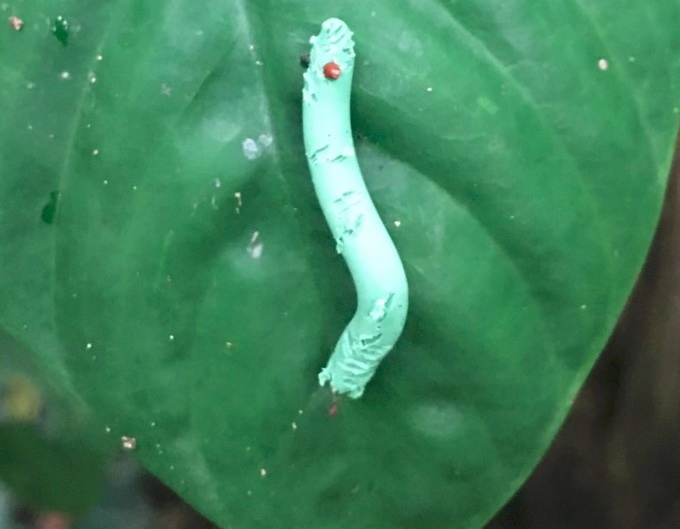Ants are important predators of caterpillars, especially in the tropics. Levels of foraging intensity (and hence predation pressure) may be different among ant species so that predation pressure may change if different sets of ant species are found across different times of the day. However, we know little about the potential linkages between temporal variability of predation pressure and ant assemblages.
In a study published online in Ecological Entomology, researchers from Xishuangbanna Tropical Botanical Garden (XTBG) showed that neither ant species richness nor total abundance could explain the variation in predation rate.
The researchers used artificial caterpillars (made of odorless and non‐toxic colored plasticine ) exposed on plant leaves in a natural rainforest at XTBG in southwest China to study the diel variability of predation rate on caterpillars.
They first examined the differences in predation rate between day and night, and among the four different time intervals (morning, afternoon, early and late night).
They found that predation rate on caterpillars during the early part of the night (19.00–01.00?hours) was significantly higher than in the morning, afternoon, or late night.
They also found associations between predation rate and ant assemblage composition, suggesting that a particular set of ant species active during the early night may be more aggressive, potentially contributing to the increased predation rate at this time. Ant species richness, abundance, and abiotic factors (temperature and light intensity) did not explain the observed patterns of predation by ants.
“At the finer temporal scale employed by our study, we suggest that the effect of predator (mainly ants) assemblage composition played a more important role than environmental factors”, said Prof. Akihiro Nakamura, correspondence author of the study.
The study was supported by the Advanced Field Course in Ecology and Conservation, Xishuangbanna Tropical Botanical Garden, Chinese Academy of Sciences.
Contact
Akihiro Nakamura Ph.D Principal Investigator
Key Laboratory of Tropical Forest Ecology, Xishuangbanna Tropical Botanical Garden, Chinese Academy of Sciences, Mengla, Yunnan 666303, China
E-mail: a.nakamura@xtbg.ac.cn

Artificial caterpillar (made of odorless and non‐toxic colored plasticine ) exposed on plant leaf.

